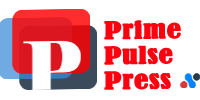Understanding the Risks and Safe Practices of Breastfeeding for HIV+ Mothers

Breastfeeding for HIV+ Mothers: Risks and Safe Practices
Mothers with HIV must think carefully about breastfeeding their babies. Thanks to new treatments, the risk of passing HIV through milk is much lower. This makes breastfeeding safer for some HIV-positive moms. It's important to know the risks and how to breastfeed safely.
Healthcare providers and moms need to understand how HIV spreads through milk and the role of treatment during breastfeeding. They also need to know about exclusive breastfeeding, managing breast health, and testing and feeding options for babies.
Counseling is key for HIV-positive moms. It helps them make choices about feeding their babies that fit their needs and wishes.
As we learn more about HIV and breastfeeding, doctors must keep up with new advice. This ensures the safety and health of HIV-positive moms and their babies.
Transmission Risks and Prevention Guidelines
HIV can pass from a mother to her child during pregnancy, birth, or breastfeeding. Mother-to-child HIV transmission is the main way babies get infected. But, with the right steps, this risk can be lowered.
Mother-to-Child HIV Transmission Pathways
HIV can move from an HIV-positive mother to her child in a few ways:
- During pregnancy: HIV can cross the placenta and infect the fetus.
- During delivery: The baby can be exposed to HIV-infected maternal blood and fluids.
- Through breastfeeding: HIV can be passed through breast milk.
Antiretroviral Therapy to Reduce Breastfeeding Transmission
Studies show that giving antiretroviral therapy to the mother or baby cuts down HIV risk during pregnancy, birth, and breastfeeding. The World Health Organization (WHO) says HIV-positive mothers should get lifelong antiretroviral therapy or prophylaxis to lower HIV transmission through breastfeeding.
Keeping the virus under control with antiretroviral therapy reduces the chance of HIV transmission during breastfeeding. This helps keep both the mother and child healthy.
WHO Recommendations for HIV+ Breastfeeding Mothers
The World Health Organization (WHO) has guidelines for HIV+ mothers about breastfeeding. These guidelines help balance the risks of HIV with the benefits of breastfeeding for babies.
Exclusive Breastfeeding and ART Adherence
According to the WHO, mothers living with HIV should exclusively breastfeed their infants for the first 6 months of life. No other liquids or solids should be given during this time. Exclusive breastfeeding is best for the baby's nutrition and health. It's important for mothers to take their ART medicine during breastfeeding to lower the risk of HIV transmission.
Breastfeeding Duration and Replacement Feeding
The WHO suggests that breastfeeding should last at least 12 months and up to 24 months or longer, if the mother takes her ART medicine. If health services offer lifelong ART and support breastfeeding for HIV+ women, there's no limit to breastfeeding. Breastfeeding should stop only when a safe, nutritious diet can replace it.
By following these WHO guidelines for HIV+ breastfeeding mothers, mothers can give their babies the best of exclusive breastfeeding. This approach also helps minimize the risk of HIV transmission by sticking to ART and breastfeeding safely.
Understanding the Risks and Safe Practices of Breastfeeding for HIV+ Mothers
Mothers with HIV on ART and an undetectable viral load have a low risk of passing HIV to their babies through breastfeeding. This risk is less than 1%, but it's not zero. Healthcare providers should stress the need to follow ART instructions and keep the viral load undetectable for those breastfeeding. They should also help with any issues that might make it hard to stick to ART after the baby is born.
Switching to formula or pasteurized donor milk from a milk bank can stop HIV from passing to the baby. It's important to talk about this option with the mother. Consider her likes, her ability to get safe milk alternatives, and any problems she might face with formula or donor milk.
Key Considerations for HIV+ Mothers Who Choose to Breastfeed
- Sustained Undetectable Viral Load: Keeping the HIV viral load undetectable with regular ART is key to lowering the risk of passing it on during breastfeeding.
- Exclusive Breastfeeding: Giving only breastmilk, without other liquids or solids, helps reduce the risk of HIV transmission.
- Breastfeeding Duration: The World Health Organization suggests breastfeeding up to 24 months or more if the mother's viral load stays undetectable.
By knowing the risks and following safe practices, HIV+ mothers can make choices about breastfeeding that focus on their and their babies' health.
Counseling and Shared Decision-Making
Mothers with HIV need guidance on breastfeeding and infant feeding options. This guidance is key for making informed decisions together with healthcare providers. It should start before pregnancy or early in pregnancy and continue after the baby is born.
Patient-Centered Infant Feeding Counseling
The patient-centered infant feeding counseling for HIV+ mothers should discuss risks and benefits of breastfeeding. It should also talk about safe feeding alternatives and the need to stick to HIV treatment. The goal is to help mothers make choices that are best for them and their babies.
Addressing Challenges to ART Adherence
Healthcare providers must be ready to help with any issues related to taking HIV medicine after giving birth. They should talk about possible side effects and help overcome economic hurdles. It's important to make taking the medicine a part of daily life to lower the risk of HIV spreading during breastfeeding.
Through shared decision-making on infant feeding, healthcare providers can help HIV-positive mothers make choices that protect both the mother and the baby.
Minimizing Transmission Through Breastfeeding
HIV-positive mothers can lower the risk of passing the virus to their babies through breastfeeding. They can do this by choosing alternative feeding methods or keeping an eye on their viral load while breastfeeding. It's important to have the right support and advice to keep both the mother and baby safe.
Replacement Feeding Options
Switching to formula or pasteurized donor milk from a milk bank can stop HIV from spreading to the baby. This method, called replacement feeding, is a good way to prevent the virus from moving from mother to child through milk.
Viral Load Monitoring and Support
If an HIV-positive mom wants to breastfeed, it's key to keep her viral load low with ART during pregnancy, delivery, and after. This makes the risk of passing the virus through milk very low, under 1%. But it doesn't remove all risk. It's important to keep a close eye on these moms and offer support to lower the chance of passing the virus and help both mom and baby.
| Replacement Feeding Options | Viral Load Monitoring and Support |
|---|---|
|
|
By looking into these options and offering full support, healthcare workers can help lower the risk of HIV spreading through breastfeeding. This way, HIV-positive moms and their babies can have the best outcomes.
Follow-up Care and Resources
HIV-positive mothers who choose to breastfeed need ongoing care and the right resources. This helps lower the risk of passing HIV to their babies. Healthcare providers are key in helping these mothers through the breastfeeding process.
Healthcare providers can get advice from the National Perinatal HIV/AIDS Hotline at 1-888-448-8765. They can also use the Infant Feeding for Individuals With HIV in the United States guidelines. These resources help doctors give top-notch care tailored to each mother's needs.
To give the best follow-up care for HIV+ breastfeeding mothers, healthcare providers should:
- Keep a close eye on the mother's viral load and her follow-up on antiretroviral therapy (ART) while breastfeeding
- Give counseling and support for breastfeeding and ART challenges
- Do regular tests on the baby and check-ups to spot and fix any problems early
- Work with the mother to make a plan to lower the risk of HIV transmission through breastfeeding
There are also resources for HIV+ breastfeeding mothers like support groups, lactation consultants, and educational materials. These resources and personalized follow-up care help HIV-positive mothers make safe choices about breastfeeding.
| Resource | Description |
|---|---|
| National Perinatal HIV/AIDS Hotline | Healthcare providers can call 1-888-448-8765 for guidance on managing the care of HIV-positive mothers who wish to breastfeed. |
| Infant Feeding for Individuals With HIV in the United States | Comprehensive guidelines to assist healthcare professionals in delivering high-quality, personalized care for HIV-positive breastfeeding mothers. |
| Support groups | Provide a safe and supportive environment for HIV-positive breastfeeding mothers to share experiences, challenges, and strategies. |
| Lactation consultants | Offer specialized expertise in supporting HIV-positive mothers with breastfeeding techniques and troubleshooting any issues. |
With thorough follow-up care and the right resources, healthcare providers can help HIV-positive mothers. They can make informed choices and breastfeed safely, reducing the risk of HIV transmission.
Conclusion
The updated HHS HIV clinical practice guidelines offer clear advice for HIV-positive mothers thinking about breastfeeding. They balance the low risk of passing on the virus with the benefits of breastfeeding. This approach supports mothers who choose to breastfeed while keeping the virus under control with ART.
It's important to have thorough counseling, regular check-ups, and access to necessary resources. This ensures the safety and health of both the mother and the baby. Healthcare workers must help HIV-positive mothers overcome any challenges with ART and support them during breastfeeding.
The final word on breastfeeding for HIV-positive mothers is that it can be safe with the right support. With guidance and support, HIV-positive mothers can make informed choices. This approach helps ensure the best health for both the mother and the baby.
New HHS HIV guidelines now allow breastfeeding for HIV+ mothers on treatment with undetectable viral loads. The risk of HIV passing to a baby through breastfeeding is very low, less than 1%. Safe formula feeding is also an option to prevent HIV transmission.
HIV can be passed from mother to child during pregnancy, birth, or while breastfeeding. Giving antiretroviral medicines to the mother or baby greatly lowers the risk of HIV through breastfeeding.
WHO suggests HIV+ mothers should only breastfeed for the first 6 months. Then, introduce solid foods and breastfeed until at least 12 months, up to 24 months or more, with ART support.
Mothers on ART with undetectable HIV levels have a risk of passing HIV through breastfeeding of less than 1%. It's important to take ART as directed to keep the virus undetectable.
To avoid HIV transmission, replace breastfeeding with formula or pasteurized donor milk from a milk bank.
HIV+ mothers wanting to breastfeed should get counseling on feeding options. This helps in making informed decisions. Providers should also help with any issues related to taking ART after birth.
If breastfeeding is chosen, focus on keeping viral levels undetectable through ART during pregnancy, delivery, and after. This lowers the risk of passing HIV through breastfeeding. Close follow-up care and support are key to reducing transmission risk.
HIV+ mothers breastfeeding should get regular check-ups and support to lower the risk of passing HIV to their babies. Health providers can call the National Perinatal HIV/AIDS Hotline (1-888-448-8765) for advice. Detailed information is also found in the Infant Feeding for Individuals With HIV in the United States guidelines.
FAQ
What are the current guidelines and recommendations for breastfeeding among HIV+ mothers?
What are the primary modes of mother-to-child transmission of HIV?
What are the WHO recommendations for HIV+ mothers regarding breastfeeding?
What is the risk of HIV transmission through breastfeeding for mothers on ART with sustained undetectable viral load?
What options are available to eliminate the risk of HIV transmission through breastfeeding?
What kind of counseling and support should be provided to HIV+ mothers who want to breastfeed?
What steps can be taken to minimize the risk of HIV transmission through breastfeeding?
What resources are available for HIV+ mothers who want to breastfeed?







